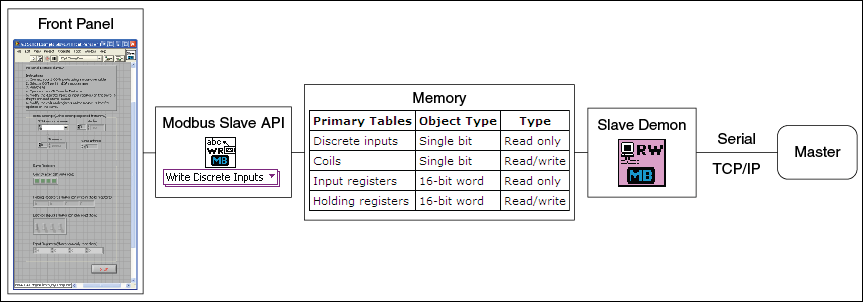MB Serial Slave Demon.vi
The serial slave demon constantly scans the serial port for commands from the master. When it detects a command from the master, it updates the memory tables with data and also responds to the master's query for data. You must use the slave API to access the data in the tables.


 | Serial Port Setup (RT Only) is required to configure the serial port on the RT system (if running Pharlap RT OS).
| ||||||||||||||||||||||||||||||||||||||||||||||
 | Slave Address represents the address of the slave on the MODBUS network. The masters use this address to communicate with the correct slave. | ||||||||||||||||||||||||||||||||||||||||||||||
 | VISA resource names specifies a array of all the resources to be opened and used to connect to masters. For example, you can use two serial ports to connect a slave to multiple masters. Because this is an array of strings, you can use a VISA property node to extract the VISA resource name from a VISA Session control. Refer to MB Serial Slave Example.vi for an example. | ||||||||||||||||||||||||||||||||||||||||||||||
 | Modes selects which type of MODBUS frame to use. This is an array of clusters. Each array location corresponds to the mode setting for the corresponding VISA session in the VISA resource names array.
RTU | ||||||||||||||||||||||||||||||||||||||||||||||
 | Timeouts specifies the maximum time period, in milliseconds, that the slave waits for the master's response before throwing an error. Each location in the array represents the setting for the corresponding VISA resource from the VISA resource names array. | ||||||||||||||||||||||||||||||||||||||||||||||
 | Period represents the duration of a MODBUS cycle, or how often the slave scans the serial ports. |


